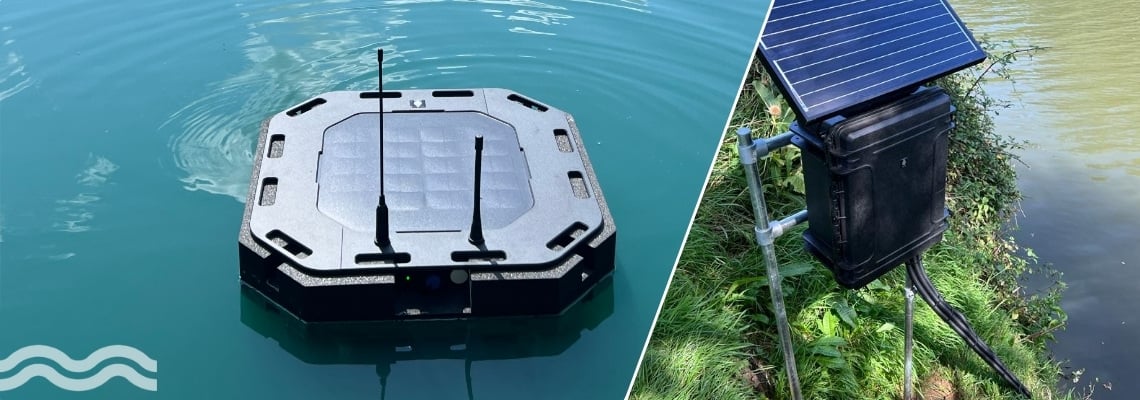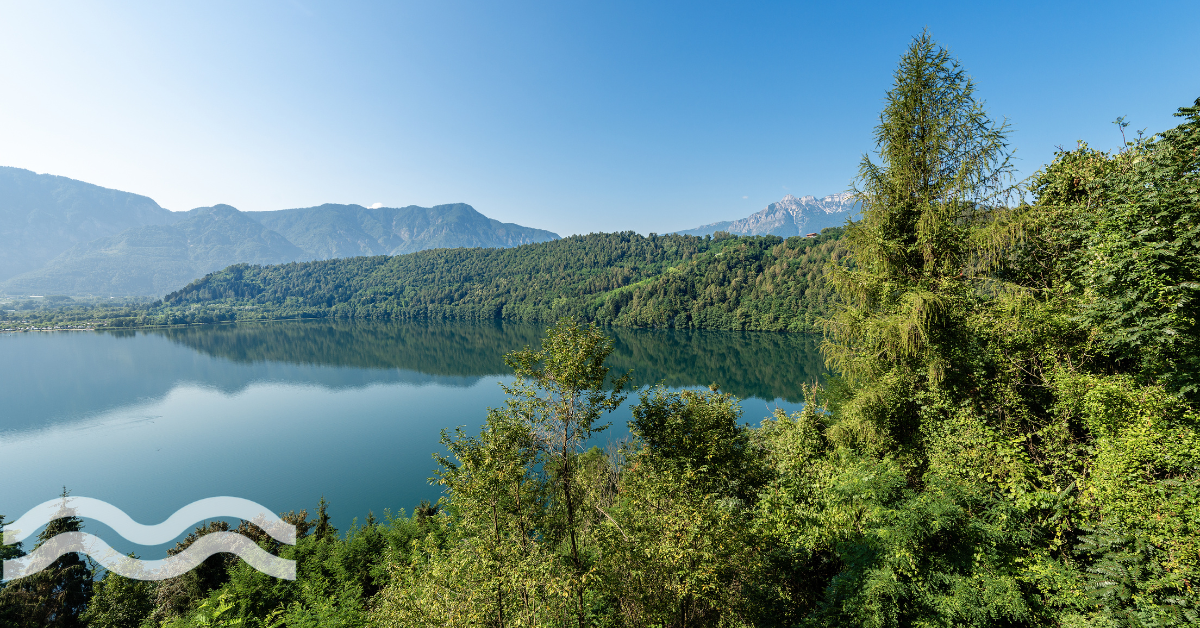Smoke detectors for rivers offer real-time turbidity monitoring
The quality of water flowing through rivers is being monitored by sensors dubbed ‘smoke detectors’ by UK-based environmental technology solutions provider, WATR. The devices offer real-time catchment monitoring of conditions upstream of reservoirs, offering utilities key data to assess extraction decisions.

Upstream detection of water quality issues
The sensors have been designed to assess the quality of water flowing through river catchments, especially during the critical reservoir filling periods in autumn and winter, assessing turbidity and monitoring for a range of indicators, such as dissolved oxygen, pH, fresh and saltwater conductivity, turbidity, nitrite, nitrate, ammonia, ammonium, potassium, doppler flow, depth (pressure), and sonde.
How do the detectors work?
The system floats on the surface of the water and is powered by solar energy. They are designed to be non-invasive. With each catchment presenting unique behaviours, the system supports a tailored, data-driven approach to managing raw water risks.
The smart sensors collect data which is fed at regular intervals to an online catchment connectivity platform. Threshold alerts help trigger internal assessments and responses depending on end-user requirements.
A personalised dashboard lets users compare parameters and collect information from multiple locations to assess different points along the course of a river or across a catchment.
Nick Thompson, WATR co-founder, told Aquatech Online: “The WATR platform has been built for flexibility and resilience – capable of transmitting data from virtually anywhere in the world using GSM, LoRa, or satellite communication. Threshold alerts can be configured so that any breaches in water quality parameters are immediately flagged. If required, the frequency of readings can also be increased remotely via the WATR dashboard, giving users real-time responsiveness without the need to physically access the devices.”
One of the key strengths of the WATR platform is that it is entirely sensor-agnostic, as Thompson explained: “This means we’re not tied to any one manufacturer; we can integrate the most appropriate sensors for the specific environment and application.”
Water-based detectors around the world
Sensors are increasingly being deployed in rivers and other water bodies to assess water quality and to trace contaminants.
eDNA (Northern Ireland)
Dublin City University secured €1.5 million from the Marine Institute to advance development of its MariBiome sensing platform that uses non-intrusive eDNA testing to determine the changing health of Ireland’s marine ecosystems.
MariBiome is a modular system that contains sensors that can: capture and filter DNA to determine biodiversity; detect pesticides, pharmaceuticals, and other pollutants of concern; and capture and detect microplastics.
EU Monitoring project
A multidisciplinary team of European researchers has launched the IBAIA project. The project aims to develop modules containing four sensors based on complementary photonics and electrochemical technologies to improve water quality monitoring and help develop countermeasures against pollution.
The four modules will include photonic sensors in the visible and near-infrared for the detection of microplastics and salinity measurement, and mid-infrared for the detection of organic chemicals. They will also feature electrochemical sensors for nutrient salts and heavy metal detection. In addition, it will also feature a chemical transducer, as well as an optical sensor for sensing physicochemical parameters.
AI and smart sensors detecting Algal blooms
Welsh Water is using a combination of AI and smart sensors to transform how it monitors and detects algal blooms in its reservoirs. The non-intrusive sensors send data for remote AI-driven analysis that can detect algal blooms, but can also be used to compare water quality data with historical data sets to improve prediction models.
WATR and Anglian Water
WATR initially began trialling its real-time catchment monitoring systems with UK-utility Anglian Water in 2020. The sensors were deployed River Gipping catchment, which feeds into Alton Water Reservoir, in one of the driest regions of the UK.
The project expanded to monitor the Colne and the Northern and Western Salary Brooks, which feed into the Ardleigh Reservoir, providing continuous real-time data on turbidity (water clarity), a key indicator of sediment and contaminant movement during rainfall events.
Thompson explained exactly how WATR is helping the utility: “In the case of Anglian Water’s catchment monitoring, GSM coverage is strong, allowing the sensors to send hourly data reliably to our secure online platform.”
Thompson added: “For this project, we’re primarily using WATR sensors to monitor turbidity, dissolved oxygen (DO), and temperature. These sensors include a self-cleaning wiper mechanism, which significantly reduces fouling and maintenance requirements, ensuring accurate, consistent data collection in challenging field conditions.”
Insights gained from the sensors are enabling Anglian Water to take more informed decisions about when to reduce or resume water abstraction, helping to protect the local treatment works and to optimise reservoir volumes. Data has also revealed a clear link between turbidity spikes and subsequent increases in nitrate and pesticide levels, particularly in the River Colne and River Gipping, when heavy rainfall has followed prolonged dry periods.
“The value of this data cannot be overstated,” said Gary Hodgetts, catchment advisor at Anglian Water, told media: “Being able to detect shifts in turbidity in near-real time gives us early warnings of increased catchment connectivity and potential risks to raw water quality, be it from soil, nutrients or even pesticides.”
WATR co-founder Glyn Cotton told Aquatech Online: “Our mission has always been to make water quality visible, in real time. Working with Anglian Water to integrate turbidity data into wider weather and soil monitoring platforms shows how smart technology can actively support environmental stewardship and resource resilience.”




